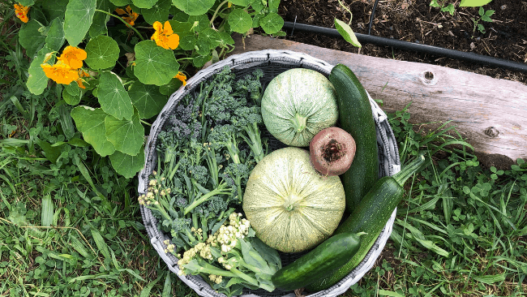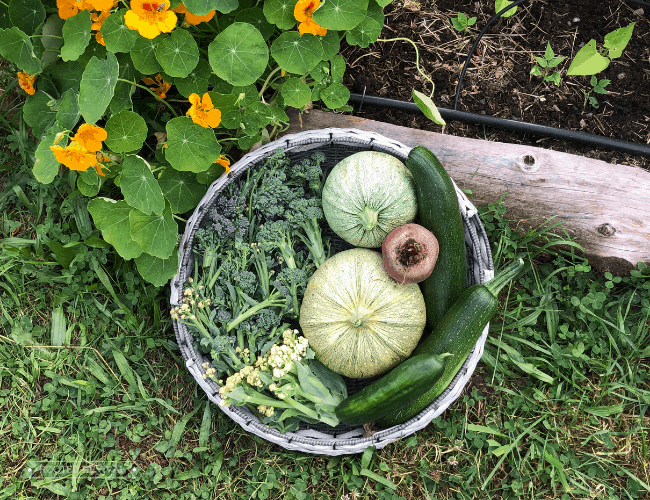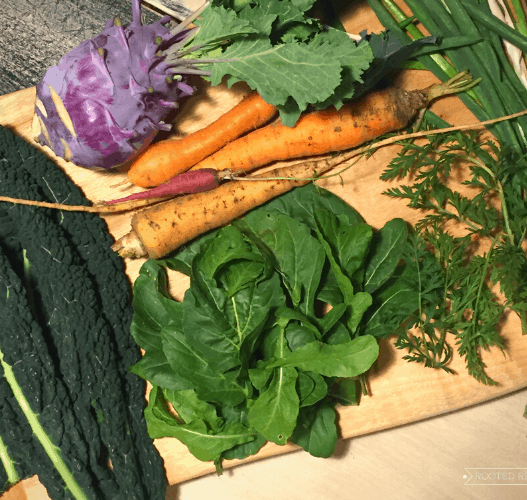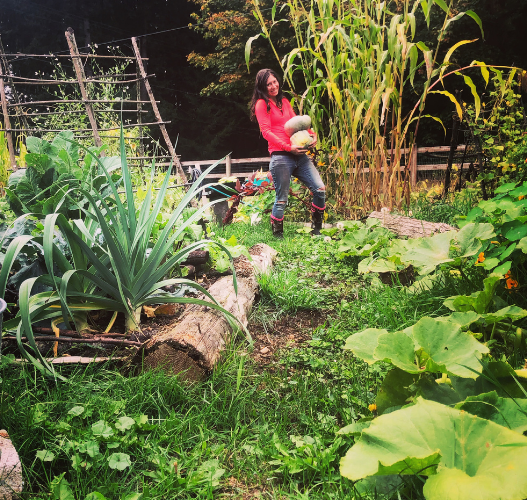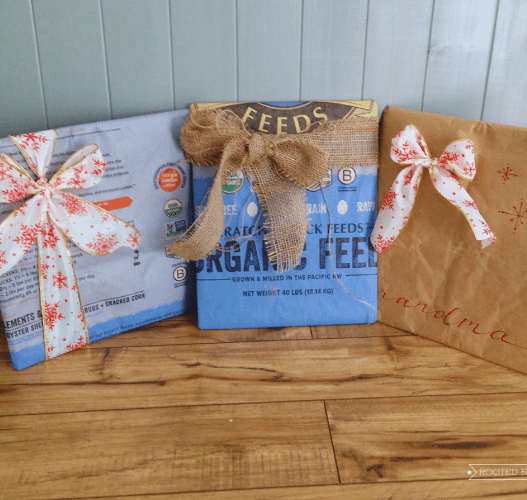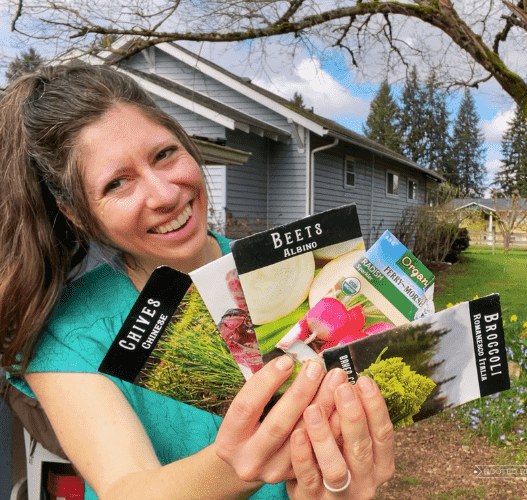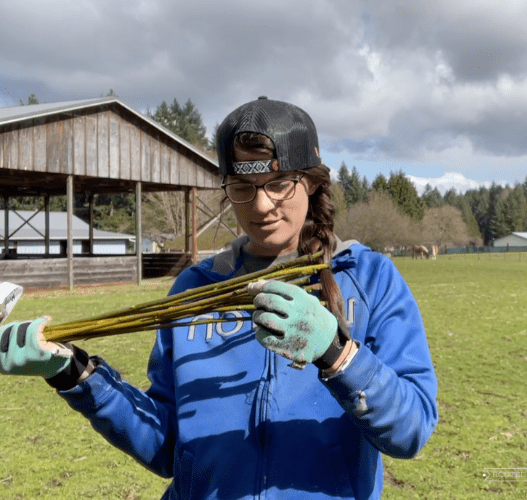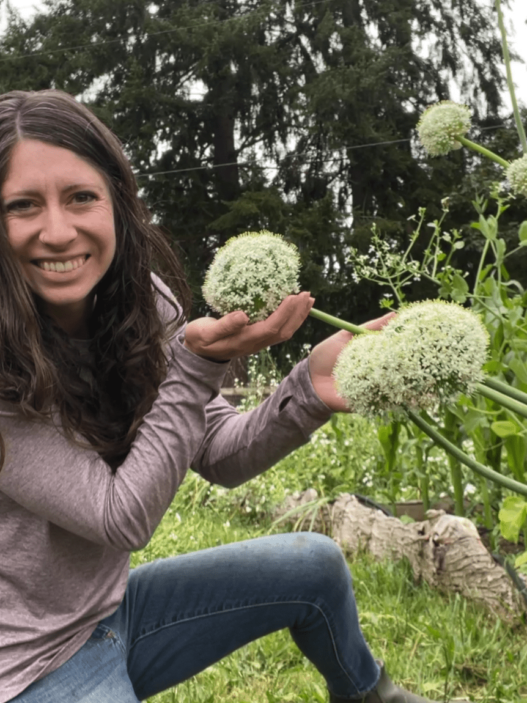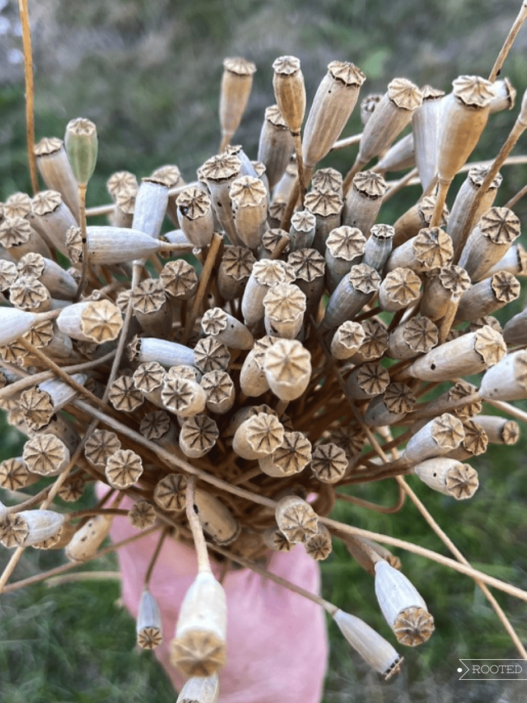Summer is ending and fall is beginning, but the garden is still going! Here’s what to expect from your end of season garden as the seasons change!
Fall is here and summer is officially over! But what does that mean for the garden? Many new gardeners have no idea what to expect from an end of season garden! Heck, when I was a new gardener, I certainly didn’t know!
There’s a lot of advice on how to prep your garden for winter and how to plant a fall garden. But what about the summer garden that is transitioning into fall?!
A lot of my garden coaching clients have tons of questions about what to do at this point in the gardening season… because, well, no one ever really talks about it! In fact, one of my clients recently told me that this is the time of year when she gets so overwhelmed that she usually gives up!
So, let’s chat about what to expect from an end of season garden!
We are going to cover some of the main crops that most gardeners grow, including tomatoes & peppers, herbs, greens & other vegetable crops like cucumbers and more! For each one, we will discuss what to do for the final harvests, when to harvest and what to expect as the frost approaches.
Ready to dig in?! Let’s go!
Tomatoes & Peppers: What to expect in your end of season garden!
As we near the end of the summer season, it’s time to make the most of our tomato and pepper harvest! Tomatoes and peppers will continue to ripen throughout the fall. As overnight lows dip below 50OF, the plant will struggle to set any new fruit and flowers. Focus on making the most of the existing fruit that has already been set on your tomato and pepper plants.
Encourage Ripening On-Vine:
Any new green growth, flowers, newly set fruit, and branches without any maturing tomatoes can be removed to encourage the plant to focus on ripening existing fruits. Check out my full post for more ideas to ripen tomatoes faster.
Frost Protection:
Tomatoes and peppers are frost sensitive. Watch overnight lows and protect your plants on nights when there are possible freezing temps. Cover them with frost blankets, greenhouse plastic, black trash bags or bed sheets. Remember to remove the coverings in the morning once the fear of frost has passed.
Rainy Weather:
In areas that experience heavy rains and humidity during the fall, you may see more cracking or splitting in your tomatoes. To avoid this, you can pick your tomatoes when they are underripe (just turning yellow-red) and allow them to ripen indoors.
Green Tomatoes:
You can also pick all of the tomatoes on your plant – both green and red – at the end of the growing season. I usually do this the day before the first expected frost. Green tomatoes can be allowed to ripen indoors, or you can use them in recipes for canning and cooking that call for green tomatoes. Here are some great recipe ideas for green tomatoes!
Note: frost damaged tomatoes should not be canned
Or, you can ripen undamaged green tomatoes inside. Store the tomatoes in a single layer in a box or container lined with newspaper or paper towels. Keep the tomatoes in a warm place (60-75oF) out of direct sunlight for for ideal ripening.
Ripening Peppers:
Likewise, peppers can also continue to ripen after they are picked. Pick them before the frost and ripen them in the same manner as green tomatoes.
Herbs: what to expect at the end of the season
Basil:
Basil is grown as a frost-sensitive annual in most areas. Because of this, the plant will be killed by the frost and will not regrow the next year. As temperatures start to drop, growth of the plant will slow and it will focus on producing flowers and seeds. Harvest any remaining leaves to use before an expected frost.
Lavender:
Lavender is woody perennial (technically, a “subshrub”). This means that it has both woody growth and herbaceous growth. The green herbaceous growth will die back over winter, revealing the woody (“stick-like”) stems.
Many people shape or prune their lavender in the fall. This can actually encourage the plant to set new growth just before it is killed by winter weather. This uses a lot of the plant’s energy and can be damaging to the plant. It’s actually best to prune or shape the plant in early spring as the new green growth starts to appear. And remember to never trim the woody stems!
Mint, Sage, Oregano & Thyme:
The mint family contains many of our common culinary herbs, including sage, oregano, lemon balm, thyme and of course mint! These herbs are known as “herbaceous perennials”. This means that they will die back over winter but return in the spring.
Make sure they are planted in a spot where you are happy with them and where they can spread next year. If they are planted in a pot or in a less than ideal location, fall is a perfect time to transplant them. Move them to their new space early in the fall season so they can adjust before a hard frost kills them.
Rosemary:
Rosemary is not well adapted for very cold weather. In cold areas, it can be grown as an annual. Alternatively, if you want to grow it as a perennial, you can pot it and bring it inside or place it in a warm protected location during the cold weather. If you do live in a mild climate, it is still beneficial to mulch heavily around the rosemary to protect it from the cold.
Greens: What to expect at the end of the season
Fall is an ideal time for growing greens! Most greens will happily grow in cooler weather and many varieties (like spinach, chard, mustards and kale) are frost hardy. Fall is a good time to start some new greens by planting patches or rows successively every 10 days.
Summer greens will most likely have bolted by now. This means that they have produced flowers and set seeds. You can leave bolted greens in your garden if you have the room.
They will drop their seeds and you will likely get a bumper crop of volunteer lettuce from the seeds! Or, you can remove the spent greens from your garden if you need the space for other cool season crops.
Other Garden Vegetables: What to expect in your end of season garden!
Cucumbers:
Cucumbers have a short lifespan. Most varieties will set one heavy crop of fruit during its growing season. After that, the plant will begin to yellow and die back naturally. You may get a few more cucumbers from the plant, but it will be a small harvest. Cucumber vines can be cut back and removed from the garden once they have finished their production season. Cucumbers are frost sensitive and will be killed by the frost.
Beans:
Bush beans, similar to cucumbers, will set one heavy crop of fruit during its growing season. After that, you will see the plants start to yellow and die back. Pole beans (climbing beans) will continue to set flowers and fruit for an ongoing harvest throughout the growing season. They will produce more steadily but in smaller initial amounts than bush beans.
Both types of beans are frost sensitive and will be killed by a hard frost.
If you are growing drying or shelling beans, harvest them once the plants have died back and the bean pods are crispy and dry. If you are in a very rainy region, it can be advantageous to pull the whole bean plant and let it continue to dry/ripen by hanging it in a garage or other covered area. You can read more about harvesting shelling beans here.
Summer Squash:
Summer squash, such as zucchini and yellow squash, are grown as annuals. If overnight lows begin to drop (below 50OF) you will notice that new fruit set will likely suffer. Existing fruit should continue to grow and ripen however, until the plant is killed by frost.
If you are in a rainy or humid region, you may experience powdery mildew on your squash plants beginning in late summer and worsening through the fall. This can also slow the development of the fruit and the plant as a whole will begin to suffer. You may want to remove these plants early from your garden to make space for crops that are better suited for the cool weather.
Winter Squash & Pumpkins:
Winter squash and pumpkins are also grown as annuals and the vines/plants will be killed by frost. As winter squash begin to ripen and mature, you will see the vines and plant naturally yellow and die back.
Once the plant has died back and the squash are ripened, you can pick them. Cut the vine about 2 inches above the squash to leave a small stem. Use the squash or cure them for longer storage.
To cure squash, place it in a sunny, dry location for 2 weeks, turning occasionally. The rind will harden. Test it by pushing your fingernail into the skin. It should be hard and not split from the pressure. Once the squash is cured, wash it with a bleach-water solution, dry completely and store in a dark, cool (50-55OF) location until you are ready to use it.
Root Veggies:
Many root veggies can be left in the ground during early frosts. Some crops, like carrots and parsnips, actually become sweeter after experiencing a few frosts! However, it is a best practice to harvest many of these crops before the ground freezes (if applicable in your area). Repeated freezing and thawing of the ground can produce mushy or spongy root veggies.
